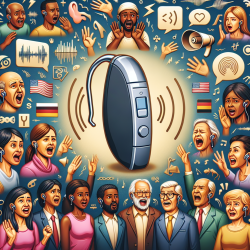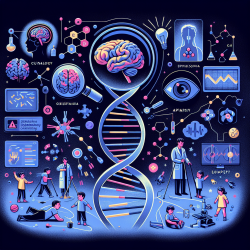In the field of speech-language pathology, leveraging data-driven decisions is crucial for creating optimal outcomes for children. A recent study titled Experience with an Affective Robot Assistant for Children with Hearing Disabilities provides valuable insights into how assistive technology can be utilized to support children with hearing disabilities. This blog will delve into the key findings of the research and explore how practitioners can implement these outcomes to enhance their practice.
Key Findings from the Study
The study evaluated the effectiveness of a socially assistive robot, Pepper, enhanced with emotion recognition capabilities, in audiometry tests and rehabilitation for children with hearing disabilities. Three different setups were compared:
- Conventional setup
- Tablet setup
- Robot + Tablet setup
Several machine learning techniques and deep learning models were used to classify the emotions of children (pleasant, neutral, unpleasant) based on physiological signals recorded during the tests. The results demonstrated that children interacting with the robot exhibited more distinguishable positive and negative emotions compared to the other setups.
Implementing the Research Outcomes
Practitioners can enhance their skills and improve outcomes for children by integrating the following strategies based on the research findings:
1. Incorporate Socially Assistive Robots
Integrating socially assistive robots like Pepper into audiometry tests can significantly enhance children's engagement and emotional responses. The presence of the robot was found to stimulate children's emotions, leading to better distinguishable physiological signals and improved interaction quality.
2. Utilize Emotion Recognition Technology
Emotion recognition technology can be a valuable tool in tailoring interventions to the emotional states of children. By understanding whether a child feels pleasant, neutral, or unpleasant, practitioners can adapt their approaches to better meet the child's needs, thus improving the effectiveness of the intervention.
3. Embrace Gamification
Gamifying audiometry tests using tablet interfaces and interactive robots can increase children's motivation and attention. The study showed that children performed better and were more engaged when the tests were gamified, suggesting that this approach can make the testing process more enjoyable and effective.
4. Standardize Feedback Mechanisms
Using standardized verbal and non-verbal feedback mechanisms, as demonstrated by the robot's affective behaviors, can reduce biases and ensure consistent interactions. This standardization helps in maintaining children's motivation and performance throughout the tests.
Encouraging Further Research
While the study presents promising results, further research is encouraged to explore the long-term effects of using socially assistive robots in clinical settings. Investigating the impact on different age groups, varying degrees of hearing impairment, and other disabilities can provide a more comprehensive understanding of the benefits and limitations of this technology.
To read the original research paper, please follow this link: Experience with an Affective Robot Assistant for Children with Hearing Disabilities.










